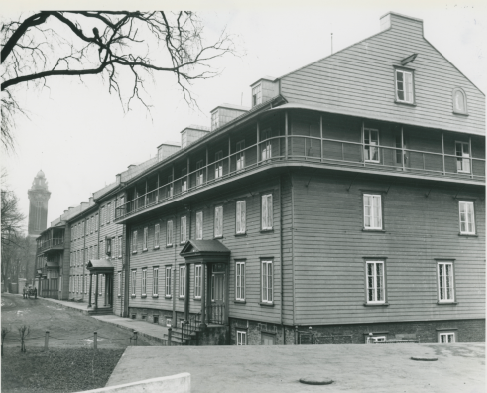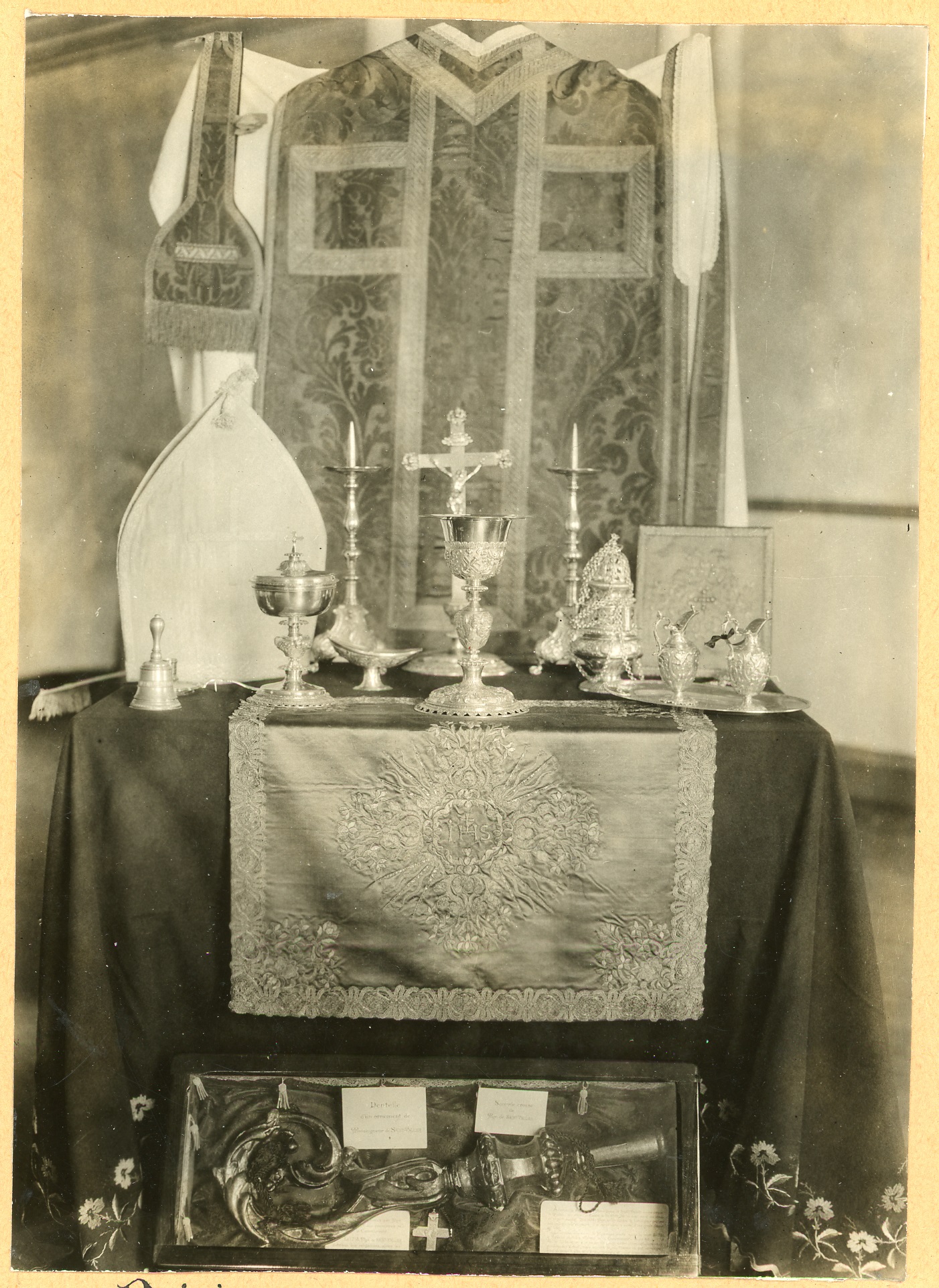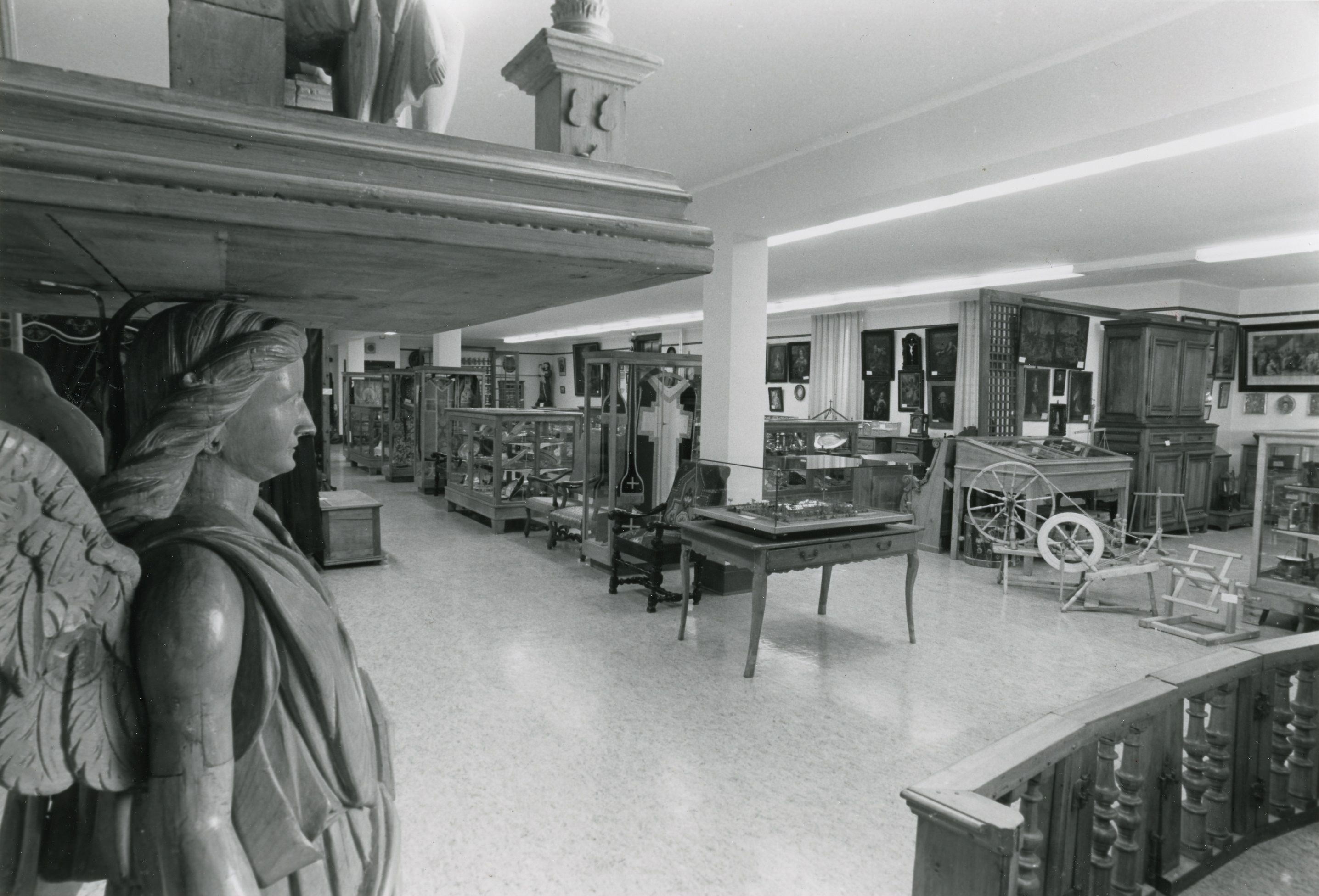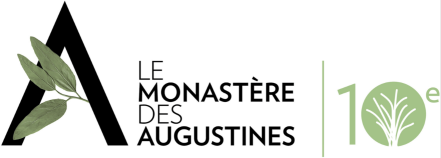The Hôpital général de Québec’s first museum
In 2018, the Hôpital général de Québec’s Augustinian Sisters are celebrating their community’s 325th anniversary. From the early 20th century, they have made it their mission to protect and make accessible material heritage they have accumulated for so many years. Inaugurated in 1930, the Hôpital général de Québec’s museum was, at the time, the first monastic museum in Québec City. Until its official closure in August 2009, this museum was located in the Notre-Dame-des-Anges wing, which was an annex built in 1929 to ensure the safe storage of artefacts and works of art. This museum was used for two purposes: to preserve the community’s works and to give the people of Québec access to the monastery’s heritage. Let’s look at the context that led to the museum’s development and then go over some interesting facts about it.

Becoming aware of the heritage’s value
From 1900 to 1930, the Augustinian Sisters had their paintings and ecclesiastical jewelry evaluated by several specialists. In 1909, James Purves, an English expert in painting passing by the Université Laval, attributed many of their paintings to important European painters, such as Elizabeth Vigée-Lebrun, Rubens, Sassoferrato and Guido Remi (Savard, 2005: 23). In 1911, they also had their silverware examined by another expert, a certain Mr. Jones, from England. They then realized that in addition to their religious use, their belongings had artistic and financial value.
Providing an exhibition space outside the cloister
Previously, there was no distinction between the cloister and where works were displayed. It was common for political and ecclesiastical dignitaries as well as seculars to venture into the cloister to admire the community’s precious objects. To limit the numbers of visitors into the cloister, the Augustinian Sisters wanted to build an architectural space to exhibit their antiques. Moreover, they wanted to open a museum to protect their heritage from fire.
Protecting the heritage from fire
On the night of November 7 to November 8, 1926, Sainte-Anne-de-Beaupré’s temporary basilica was destroyed by fire. A statue of Sainte-Anne, which was considered miraculous, as well as a lot of ecclesiastical jewelry belonging to the Redemptorist fathers perished (ibid.: 14). In April of 1927, the Archbishop of Québec, Félix-Raymond Rouleau, sent a letter to the Hôpital général’s Mother Superior, suggesting to her, in the wake of the monastery’s expansion, to build a main building with flame-resistant materials.
On December 16, 1927, a fire destroyed the Soeurs du Bon-Pasteur de Québec’s painting workshop. The Augustinian Sisters lost two valuable canvases: Agonie and Descente de croix. Both were made by Flemish painter Van Dyck, which they had entrusted to the Soeurs du Bon-Pasteur for their restoration (ibid.: 25). These two fires caused considerable losses and made both the clergy and community aware of the importance of keeping their belongings safe from fire.

© Fonds Monastère des Augustines Archives, Hôpital général de Québec.
The first museum
In September of 1928, the diocese appointed Father Georges Ouvrard, chaplain of the Hôpital général and priest of the Notre-Dame-des-Anges parish[1]. Father Ouvrard supervised the internal organization of the Hôpital général’s museum, together with the Mother Superior, Mother Saint-François d’Assise, and her assistant, Marie des Séraphins.
Inaugurated in 1930, this Hôpital général de Québec museum was the first monastic museum in Québec. Its foundation even preceded that of the Musée de la Province de Québec (now the Musée national des beaux-arts du Québec). Located on the second floor of the Notre-Dame-des-Anges wing, a large part of the museum showcased the collections of the Hôpital général du Québec’s founder, the Bishop of Saint-Vallier, whose devotion is still deeply rooted within the Augustinian Sisters.

© Fonds Monastère des Augustines Archives, Hôpital général de Québec.
The second museum
The collection continued to grow, with many donations from the community’s relatives and benefactors. Soon, the space allocated to the conservation and preservation of artifacts becomes insufficient. The Augustinian Sisters expanded the museum in 1961 by moving it from the second to the third floor of the same building. The museum was divided into six thematic sections: sculpture, the Mgr de Saint-Vallier’s collections, the Hôpital général de Québec’s former boarding school, the community’s souvenirs, the Récollets and the pharmacy (Savard, 2015: 72).

The museum was closed in 2009. The collections were sent to the Hôtel-Dieu de Québec’s monastery and bequeathed to the Fiducie du patrimoine culturel des Augustines. A temporary exhibition will open on June 14, 2018, at the museum of the Monastère des Augustines. This exhibition will highlight the heritage of the Hôpital general de Québec. Also, in the summer of 2018, guided tours will be held at the monastery of the Hôpital general de Québec. They will be announced on the Monastère’s website.
To find out more:
Guillaume Savard, Le Musée du Monastère des Augustines de l’Hôpital Général de Québec, Québec, Bleu Outremer, 2005, 78 pages.
[1] The Hôpital général’ monastery is erected as a parish (Notre-Dame-des-Anges parish), forming an enclave in Québec City; it is the smallest municipality in Québec!

